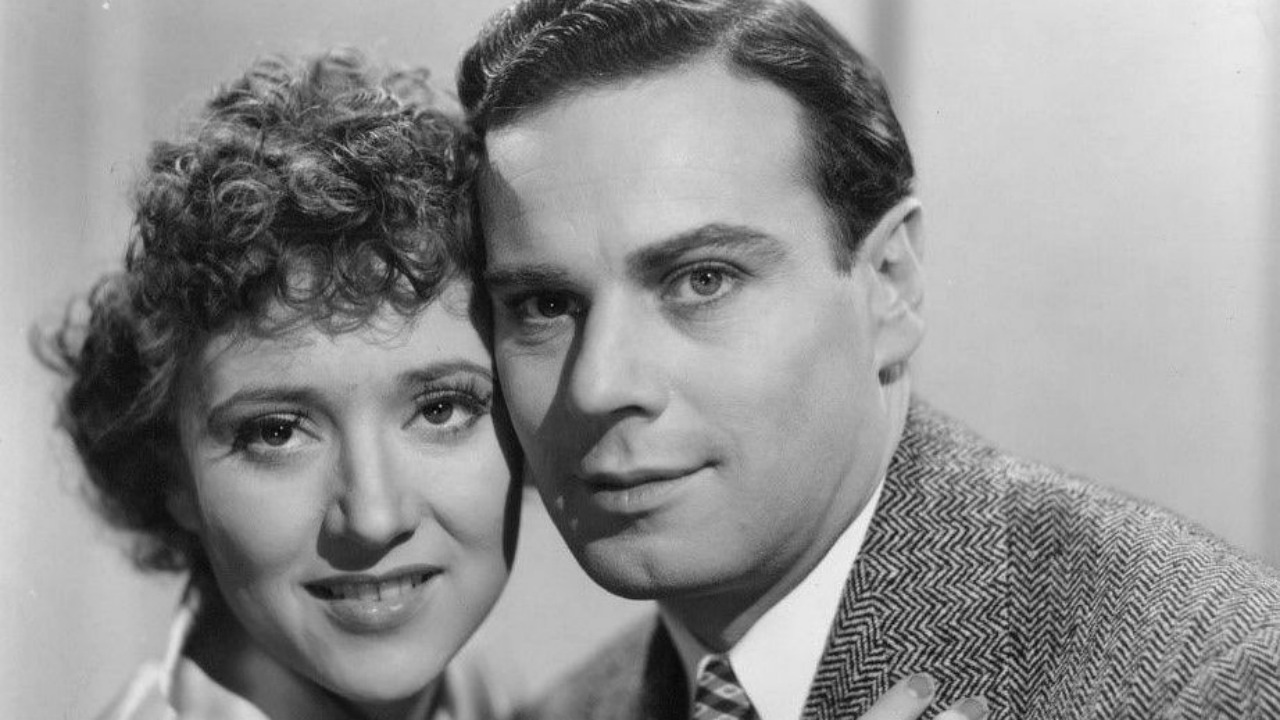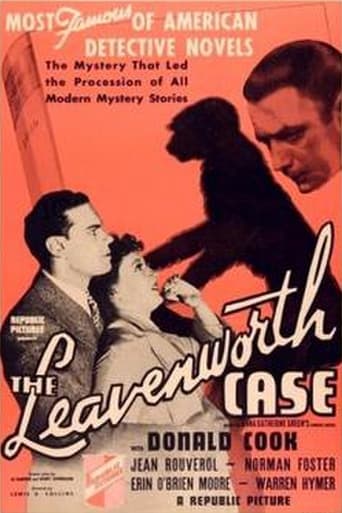

The greatest movie ever made..!
... View MoreIntense, gripping, stylish and poignant
... View MoreDid you people see the same film I saw?
... View MoreA movie that not only functions as a solid scarefest but a razor-sharp satire.
... View MoreTastes have changed significantly since 1891 to 1893, when Broadway star Joseph Haworth (QUO VADIS, JULIUS CAESAR and dozens of others) tried out a stage version of Anna Katharine Green's then wildly popular 1878 first novel, THE LEAVENWORTH CASE, about the murder of the wealthy Horatio Leavenworth who so objects to one of his niece's marrying an Englishman that he is on the verge of disinheriting her. The play did not make it to Broadway (programs survive from the engagements in London, Ontario and Columbus, Ohio, but critics seemed to feel that Haworth was "lowering himself" from playing the classics!), but other plays premiering on the Broadway of 1893 (Oscar Wilde's LADY WINDERMERE'S FAN and A WOMAN OF NO IMPORTANCE, Brandon Thomas' CHARLEY'S AUNT or Pinero's THE SECOND MRS. TANQUERAY!) are still regularly done to this day, so it is not just the somewhat stilted language (one of the major factors in relegating the author's once enormously popular mysteries - 22 major mystery novels and countless short stories from 1878 to her death at 88 in 1935 - to modern obscurity) which may have denied us one of the potentially important "Ur" theatrical mysteries. Given Green's still strong, if somewhat "over packed" plotting however, perhaps it could be an interesting rediscovery.Hollywood took a halting step in that direction with a 1923 silent version of the novel, and Green's name still meant enough nine months after her death that the ads for this second film version in 1936 touted "Most famous of American Mystery Novels . . . the mystery that led the parade of all modern mystery movies!" ("The Leavenworth Case" may have followed the three Edgar Allen Poe short stories generally credited with founding the modern mystery genre - "Murders In The Rue Morgue" was written five years before Anna Katharine Green was born - but it predated the first Conan Doyle Sherlock Holmes story by nine years!). So was it as advertised in 1936? Well, perhaps not in this version. This LEAVENWORTH CASE really isn't a bad mystery movie taken on its own by the standards of its day (the casting and direction are a step above what one normally got from second tier Republic Pictures), but the plot elements are very much cherry picked from a bare bones synopsis of the original novel and mixed with other contemporary elements. One cannot object to the omission of a major clue in the original novel that no one "could conceive of a woman dirtying her hands by oiling and cleaning a gun" (the original murder was by gunshot - only the omitted secondary murder was by poison!) but then neither the chief "red herring" suspect nor the eventually revealed - and fairly satisfying if slightly stereotypical - killer are even IN the original and there was no MONKEY! Between the first film of MURDERS IN THE RUE MORGUE (1932) and KING KONG (1933), monkeys - OK, gorillas (upgraded from an orangutan for Hollywood's ...RUE MORGUE) - were big in Hollywood at the start of the Great Depression - the 7th billed little spider monkey, Jojo, in this remake of THE LEAVENWORTH CASE must have seemed a real step down for Republic! Bottom line: not really a fair representation of the source, but a fairly entertaining programmer and worth seeking out for its back story as much as its actual surviving and acceptably entertaining plot. Students of the mystery genre should at least KNOW about THE LEAVENWORTH CASE.
... View More"The Leavenworth Case" (1936) was a remake of a 1923 silent version of an 1878 novel by Anna Katherine Green. This film would have been an above average mystery, were it not for interference from the British censors, who were just a few months away from banning horror films outright, leaving Bela Lugosi and Boris Karloff scrambling for jobs in its wake. This film's murder victim is Silas Leavenworth (Frank Sheridan), who'd made his fortune in the stock market, and now wants to make amends for his dishonest dealings by giving away his fortune. Needless to say, his family do not approve of his change of heart, and the night before he is due to change his will, he dies under mysterious circumstances. Apart from the entire family, his business partner, Henry Clavering (Gavin Gordon) is also suspected, due to his practice of embezzlement. What is made clear from the start is that Leavenworth's physician, Dr.Truman Harwell (Donald Cook), is in love with the old man's younger wife (Erin O'Brien Moore), and has a 2 million dollar monkey named Jocko (who receives 7th billing), trained to handle eggs and other strange things whenever he hears the doctor's whistle. This was what the British censors did not approve of, a doctor turning out to be the killer, so another culprit was hastily written in to be the guilty party, but we still see the monkey sneak the doctor's forged note into someone's room, and turn on the lamp gas for a convenient suicide/confession that fails to come off when the intended victim awakens and the monkey gets caught (and displays a deep attachment for the villainous doctor). The amazing new ending winds up making no sense, and the surviving 64 minute print that has aired on the Mystery Channel features four actors listed on screen who have been cut out (a lab man, a woman with a cat, and two women with dogs). The most notable bit of casting is Norman Foster as the lead detective, because he would soon give up acting to become the main director on Peter Lorre's Mr. Moto series (6 of the 8), also helming 3 of Sidney Toler's best Charlie Chan entries,one of which featured his wife Sally Blane(Treasure Island). The original TV print dating from the 1950s was chopped down to 53 minutes, so what would have come off as a somewhat routine whodunit enlivened by a remarkable monkey, ends up as a sadly snakebitten production. James Whale's 1937 release "The Road Back" suffered similar postproduction tampering, and Karloff's own "Devil's Island," completed in the summer of 1938, had to wait two years before any wide release due to objections from France. The Second World War meant the loss of the lucrative foreign market for Hollywood, but at least horror made its sterling comeback in 1939 with "Son of Frankenstein," firmly reestablishing the careers of both Lugosi and Karloff, a happy occurrence for all involved.
... View More